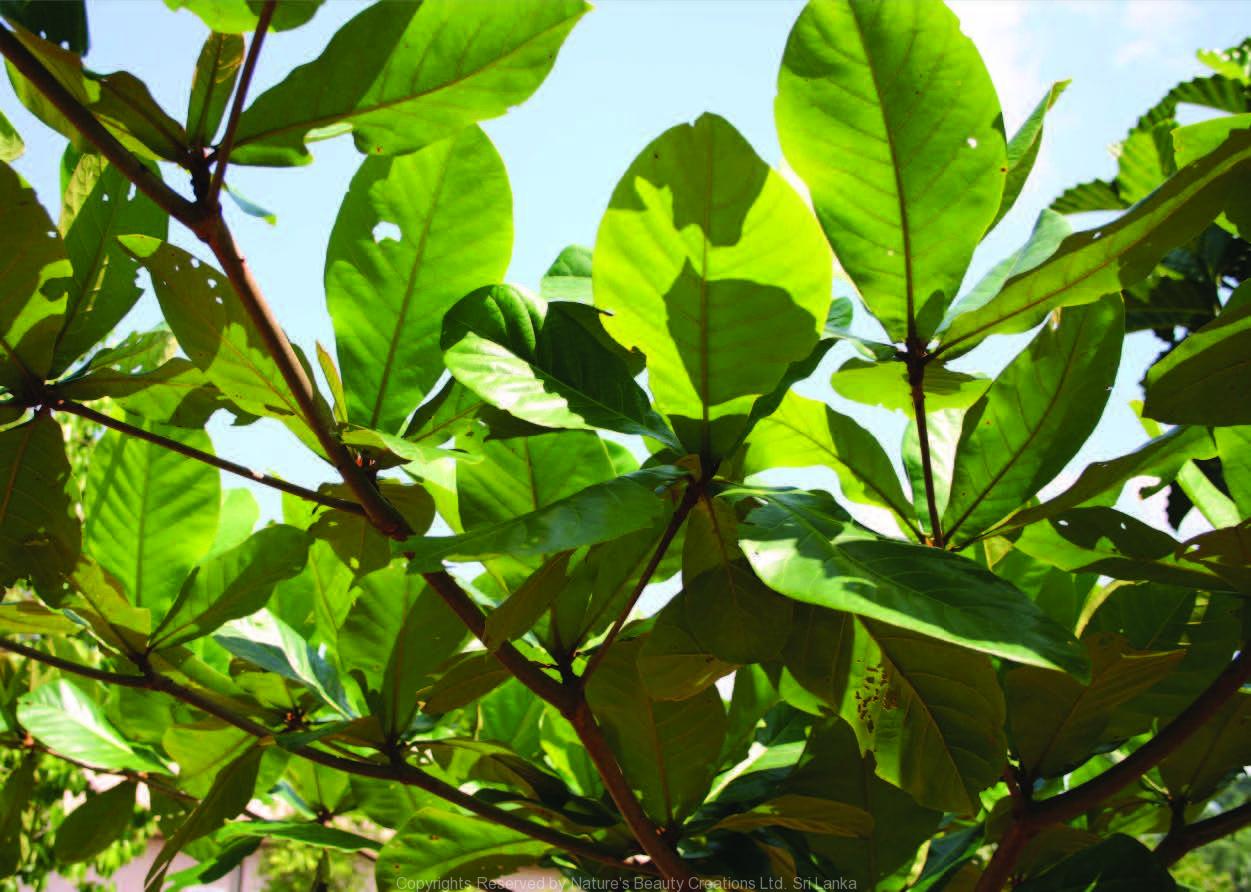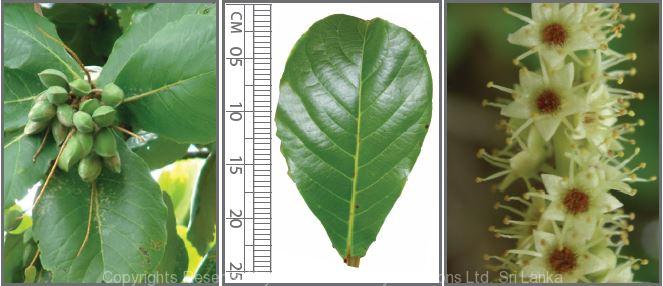

Traditional Knowledge
Useful plant parts :
Leaf and bark
Uses in traditional medicine :
- Fresh leaves are applied for scabies, leprosy and skin diseases
- Decoction of the bark is taken for diarrhoea and dysentery
- Leaves are sudorific
Scientific Research
Chemical constituents:
Flavonoid glycosides: apigenins, isovitexin, vitexin, isoorientin, rutin and gallic acid, ellagic acid from leaves
Bioactivity :
Ethanol and chloroform extract of leaves: anti-inflammatory, hepatoprotective, effective in the management of sickle cell disorders; apigenin: antioxidative; aqueous extract of leaves and fruits: antidiabetic; crushed seed kernel: aphrodisiac, moderate consumption of seed kernel could be useful in the treatment of sexual dysfunctions such as premature ejaculation in males
Clinical:
Note :
Seed kernels are edible
References : Fan, Y. M. et al., (2004), Phytochemical and antiinflammatory studies on Terminalia catappa, Fitoterapia, 75(3-4), 253-60. Gao, J. et al., (2004), Hepatoprotective activity of Terminalia catappa L. leaves and its two triterpenoids, Journal of Pharmacy and Pharmacology, 56(11), 1449–1455. Lin, Y. L. et al., (2000), Flavonoid Glycosides from Terminalia catappa L., Journal of the Chinese Chemical Society, 47, 253-256. Mansoor, A. S. et al., (2005), Anti-Diabitic Activity of Terminalia catappa Linn. Leaf Extracts in Alloxan-Induced Diabitic Rats, Iranian Journal of Pharmacology and Therapeutics, 4, 1. Mgbemene, C. N. and Ohiri, F.C., (1999), Anti-sickling Potential of Terminalia catappa Leaf Extract, 37(2), 152-154. Ratnasooriya, W. D. and Dharmasiri, M. G., (2000), Effects of Terminalia catappa seeds on sexual behaviour and fertility of male rats, Asian Journal of Andrology, 2, 213-219.
Copyrights Reserved By
Natures Beauty Creations



